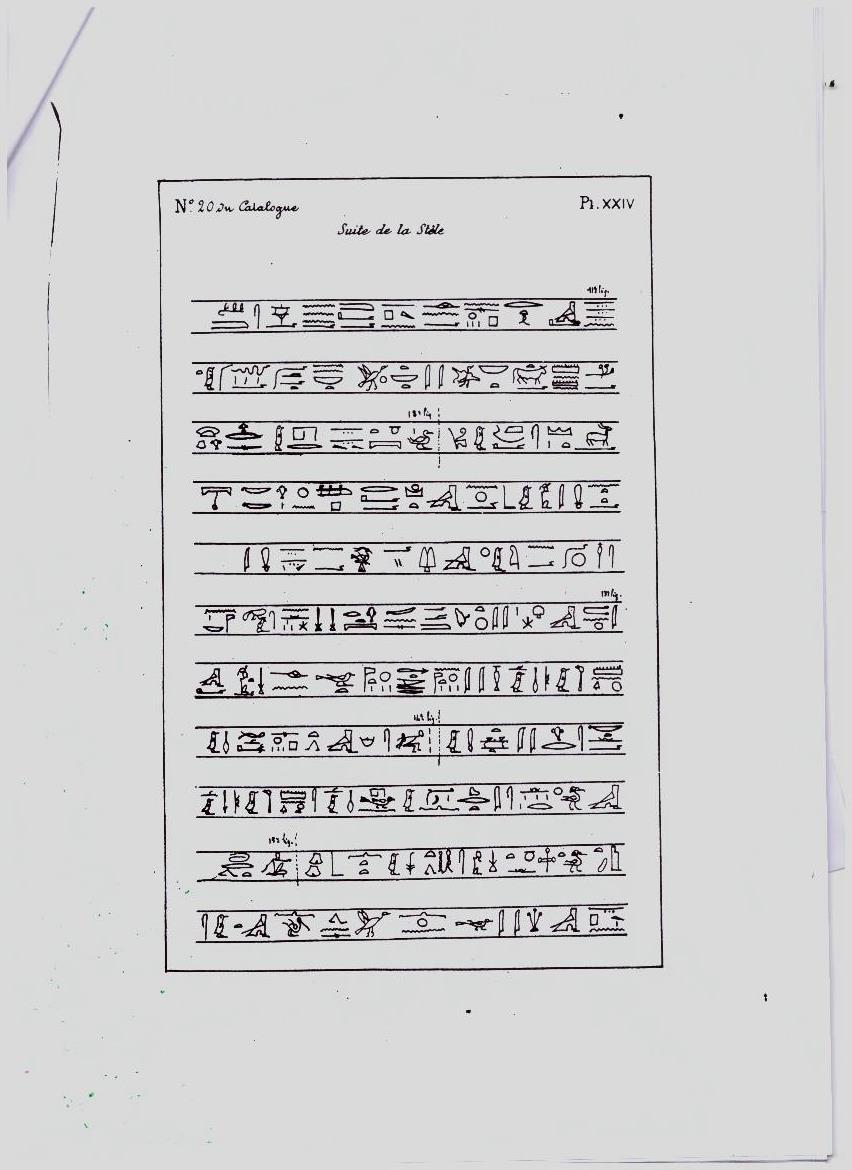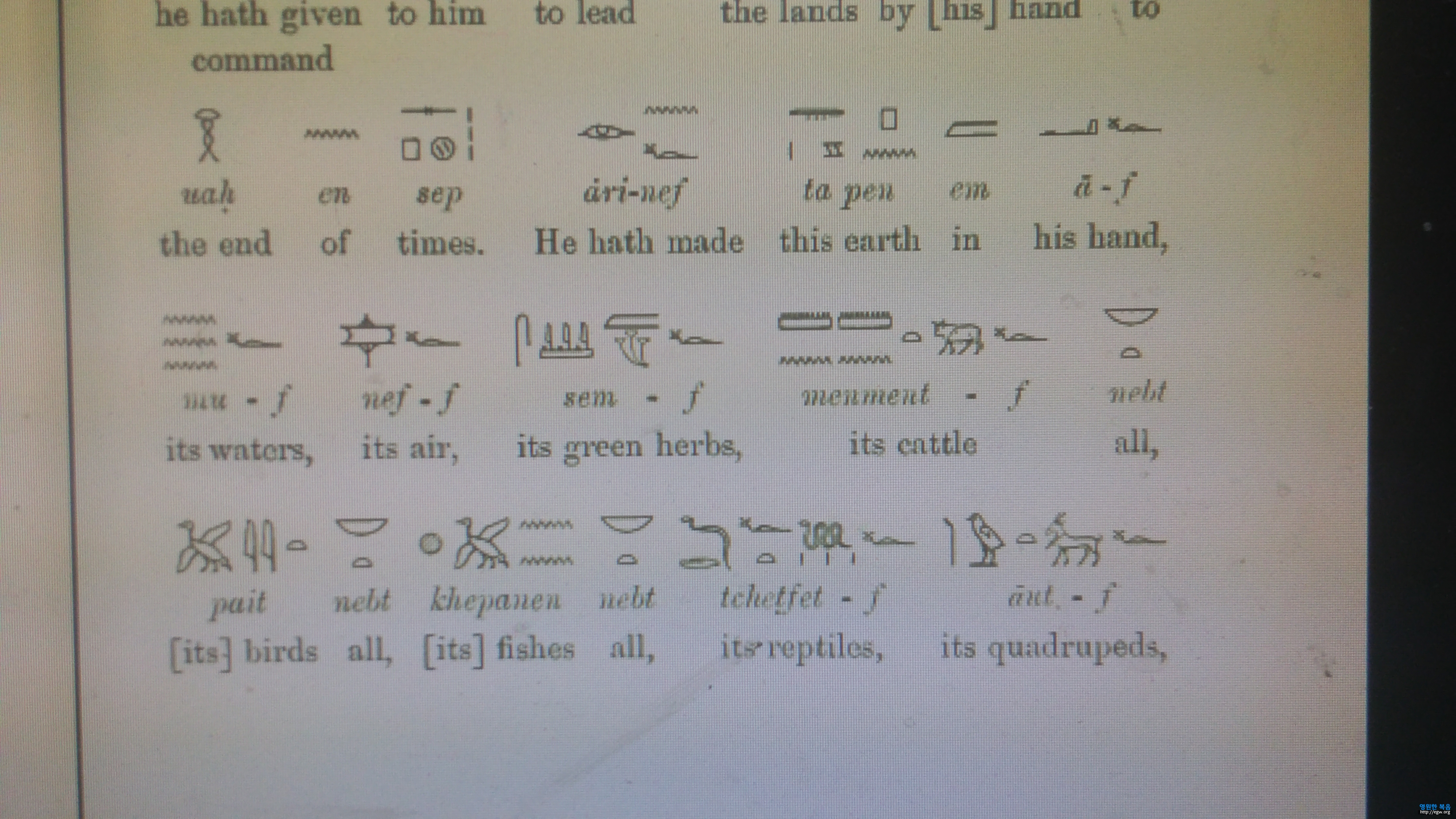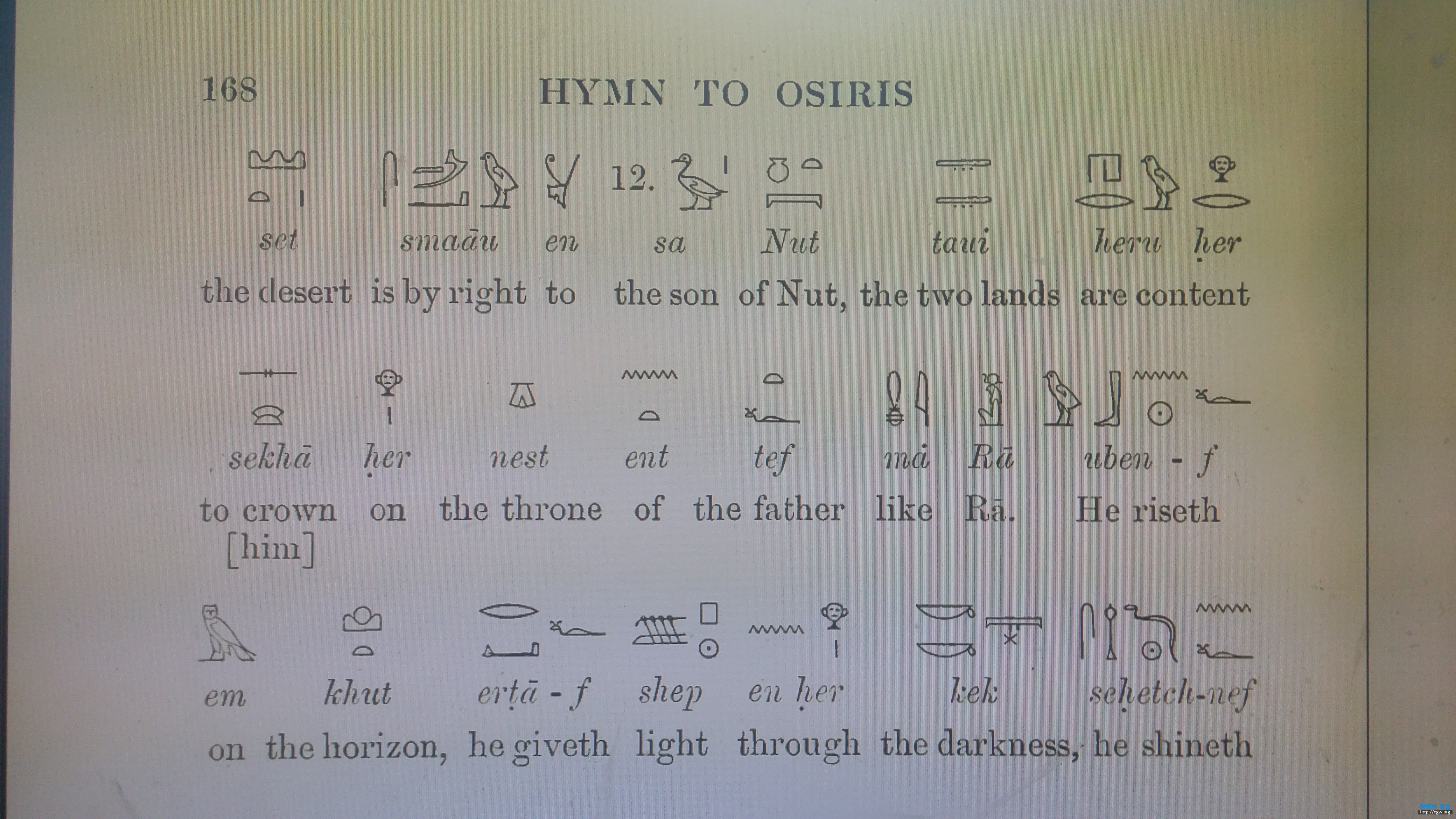Creation
order of Moses and the Creation order in the Egyptian Text of the Hymn of
Osiris
Koot van Wyk
(DLitt et Phil, Thd)
History of
the text. The text was
found circa 1857 and was a stele dating to the time of Amenhotep III and his
wife Nefertiti. He took over from his father Thutmosis IV who is known for his
dream stela between the paws of the Sphinx writing in similar fashion like
Moses how the god appeared to him and asked some favors from him. One cannot
miss the correlation with the calling of Moses in Exodus 3 with major
differences that Moses was asked to remove his shoes since he is standing on
holy ground and Moses was not to come nearer. In the Dream Stele of Thutmosis
IV the god asked him to come nearer. It seems as if the scribe who wrote or Thutmosis
IV who spoke, knew what happened to the calling of Moses in the desert by God
in Exodus 3. It is as if he is counter-bouncing Moses’ divine calling story to
fashion his own calling as future king. Keep in mind that Thutmosis IV was the
pharaoh in 1410 BCE when Israel entered over the Jordan into Canaan. All the
early letters from Amarna should be separated from the later texts during the
time of Akhenaten, the grandson of Thutmosis IV, since in these early texts the
Canaanite Egyptian overseers are calling their pharaoh to come to their rescue
since the Habiru has entered the country. Habiru = Hebrews contrary to what O.
Loretz tried to explain in his book on the Habiru. In the stele
found in 1857 from the time of his son, Amenhotep III there is a Hymn to the
god Osiris. It was copied by E. Ledrain and one can see it online at E.
Ledrain, (1879). Les Monuments étiens
de la Bibliothéque
Nationale, plate 21-27. It is 103 centimeter by 62 centimeter and it is in the Louvre
in France (no. C286). The copy by M. Alexandre Moret in 1930 [also in archive
online] follows that of Sir Walther Budge (1902) very closely [which is also at
archive online]. Copy of line
11 from the Hymn of Osiris This
is a selection of the copy of the Hymn of Osiris by Ledrain in 1879. What Budge
did in 1902, is to rewrite the Hymn in a way that one can read the words
better. Also, in Budge the text reads from left to right but in Legrain from
right to left. Below is the treatment of W. Budge in 1902 with the text.
What
interests me in this particular selection is the discussion in the Hymn of
Osiris as the god of Creation. He is the one that gave origin to everything.
Keep in mind that Moses wrote already Genesis with the Creation history of
Genesis 1-2 in the Wilderness of Midian when he was hiding from the Pharaoh at
that time after 1490 BCE with the killing of the Egyptian overseer, in the time
of Thutmosis III and Hatshepsut, the daughter of the Pharoah who found Moses in
a basket in the Nile. Get the point. Moses was so well known in Egypt that
after the Exodus his literature got distributed fast and the Umwelt libraries
of Mesopotamia and Egypt and elsewhere made sure they had some kind of copy of
it. Do I have proof. Imagination, creativity but, there are later so many
correspondences in Egyptian Literature, at Ugarit in the Baal and Dagon texts
that one has to say Moses’ literature got around and were not only in religious
Habiru’s hands. Habiru (secular ones who left the group) were all over the
Levant doing business. They were secularized but had copies of Moses’ “books”
so when one finds similar ideas in the Umwelt, instead of saying the Hebrews
copied from Ugarit, rather say Ugarit Hebrew tradesmen had Moses on their
shelves. Do not say, well, in those days everything was either on stone, or
clay-tablets or on reliefs on walls like the Egyptians. Wrong. James
Pritchard in the abbreviated version of ANET on page 180 gives the
following excerpt from the Annals of Thutmosis III from the days of Moses: “Now
everything which his majesty did. . . They [are] set down on a roll of leather
in the temple of Amon today.” That settles that criticism. So
the possibility of Moses’ literature on vellums floating around in Temples is
thus not absurd. Creation
Excerpt in the Hymn of Osiris It
is surprising to see how close the later scribe of Amenhotep III wrote his Egyptian
“Genesis” account to that of the earlier Hebrew “Genesis” account by Moses. How
the Egyptian 1404 BCE account compared to Moses’ account in 1460 BCE. Below
I have given three translations by scholars of this Hymn of Osiris and selected
line 11 dealing with the Creation in Egyptian thinking at this time. The three translations
by these scholars differ slightly but they will give a certain consensus and
that matters. Translations
of the Hymn of Osiris of line 11 W. Budge (1902): Vol.
II: 167f. He hath made this
earth in his hand, its waters, its
air, its green herbs,
its cattle all,
[its] birds all,
[its] fishes all, its reptiles, its
quadrupeds,
the desert is by
right to the son of Nut, the two lands are
content
to crown on the
throne of the father like Ra. He
riseth
on the horizon,
he giveth light
through the darkness, he shineth
A.Moret (1931):
738 Il a mis cette
terre dans sa main;
ses eaux , ses
vents, sa végétation, tout
son bétail,
tout ce qui vole,
tout ce qui plane ses reptiles, ses
animau x
du désert (ont
été ) transmis au 12. fils de Nout: (et) les Deux Terres
en sont satisfaites .
Se levant sur le
trône de son pèr e — tel que Râ quan d’il
point
à l'horizon
(oriental)
et met la lumièr
e par-dessus les ténè -bres —
M. Lichtheim (1976):
Vol. II: He placed this
land into his hand,
Its water, its
wind, Its plants, all
its cattle.
All that flies,
all that alights, Its reptiles and
its desert game,
Were given to the
son of Nut,
And the Two Lands
are content with it.
Appearing on his
father's throne, Like Re when he
rises
in lightland,
He places light
above the darkness,
Analysis and
Comparison with Moses’ Account: The Hymn
scribe said of Osiris that “He has made this earth in his hand”
whereas Moses said that Elohim created [out of non-existing pre-material] the earth
and heaven (Genesis 1:1). Osiris Hymn:
“its waters, its air,” and Moses wrote earlier about the Spirit
of God moving upon the face of the waters (Genesis 1:2) and later “let there be
a firmament” [air] dividing the water above from the water below (Genesis 1:6).
The Hymn of
Osiris says that he made “its green herbs,” which is said by
Moses already that God said that the earth should bring forth grass (Genesis
1:11). Both had the green plants on the third position, for Moses the third
day. In the Hymn
of Osiris the domestic animals are listed “its cattle all.” In
Moses’ earlier account in Genesis 1:24 it was on the sixth day that God created
the animals “let the earth bring forth the living creature after his kind.”
Here Osiris had cattle on the fourth position but Moses on the sixth day. The Hymn of
Osiris lists the birds after the cattle: “[its] birds all, [its] fishes
all.” In Moses’ account he had the birds and the fishes on the fifth
day but in the Hymn of Osiris later they listed it in the fifth position. One cannot miss the remarkable correspondence
of Mosaic ideas infiltrating Egyptian thinking of order of Creation items. In the Hymn
of Osiris the creeping animals like the reptiles are left for position sixth.
It says “its reptiles, its quadrupeds”. In Moses; earlier account
in Genesis 24 the animals including the cattle and creeping animals were made
on the sixth day too. Again there is a correspondence here between Egyptian
order of Creation and Moses’ order of Creation. The Hymn of
Osiris is then allocating the desert to a god and also upper and lower Egypt
which is the “two lands” and then explains the role of the sun. It reads: “the
desert is by right to the son of Nut, the two lands are content to crown on the
throne of the father like Ra. He riseth on the horizon, he giveth light through
the darkness, he shineth.” This is in
the seventh position. Moses already in Genesis 1:14-19 indicated that the sun,
moon and stars were made on the fourth day. Why did
Moses differ with the Egyptian concept of the sun as god in the seventh position
shining in the darkness from the horizon? Because God rested on the seventh-day
from all His work and the sun was created by God on the fourth day already. There
is no concept of a Sabbath in Egyptian Creation thinking.
Source:
Ledrain, E. (1879).
Les Monuments étiens de la Bibliothéque Nationale, plate
21-27. Lichtheim,
Miriam (2006b) [1976]. Ancient Egyptian Literature, Volume II: The
New Kingdom. University of California
Press. James
Pritchard, ANET (abbreviated version). W. Budge
(1902). The gods of the Egyptians. Volume 2. M. A. Moret
(1930). La Légende d’Osiris à L’Époque Thébaine d’Après l’Hymne
à Osiris du Louvre. Extait du Bulletin de l’Institut Français
d’ Archéologie Orientale, Vol. XXX. Le Caire: Imprimerie de l’Institut Français.


글 수 2,559
















